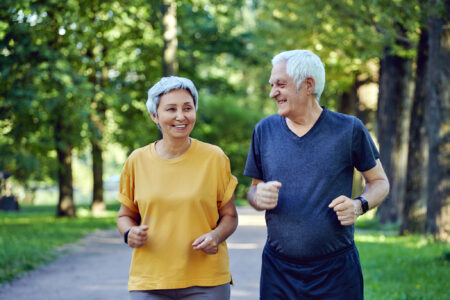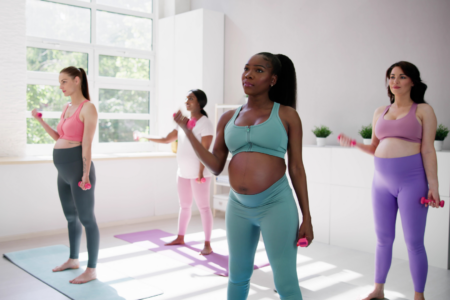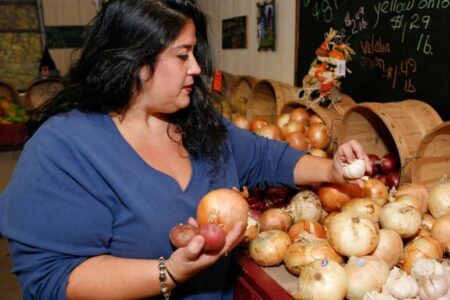Share On Social!
Many kids and families have limited spaces to be physically active.
What are the best ways to improve access to “active spaces” like gyms, athletic fields, parks, and playgrounds for all families, including Latinos?
Many schools do not provide public access to physical activity facilities. Shared use agreements set up rules for public use of schoolyards after class.
Repairing sidewalks, installing street lights, and improving parks can stimulate more physical activity. Creating safer streets can people to walk or cycle to schools, parks, and other family destinations.
Also, using marketing and technology to change kids’ physical activity patterns.
See the Full Research Review with references (PDF)
Read the Issue Brief in English (PDF)
Read the Issue Brief in Spanish (PDF)
Contents
Introduction & Methods. This Salud America! research review is an assessment of available research on family access to active spaces. The review also summarizes research on how sharing schoolyards and improving neighborhood can impact physical activity among all children, including Latinos.
Key Research Findings
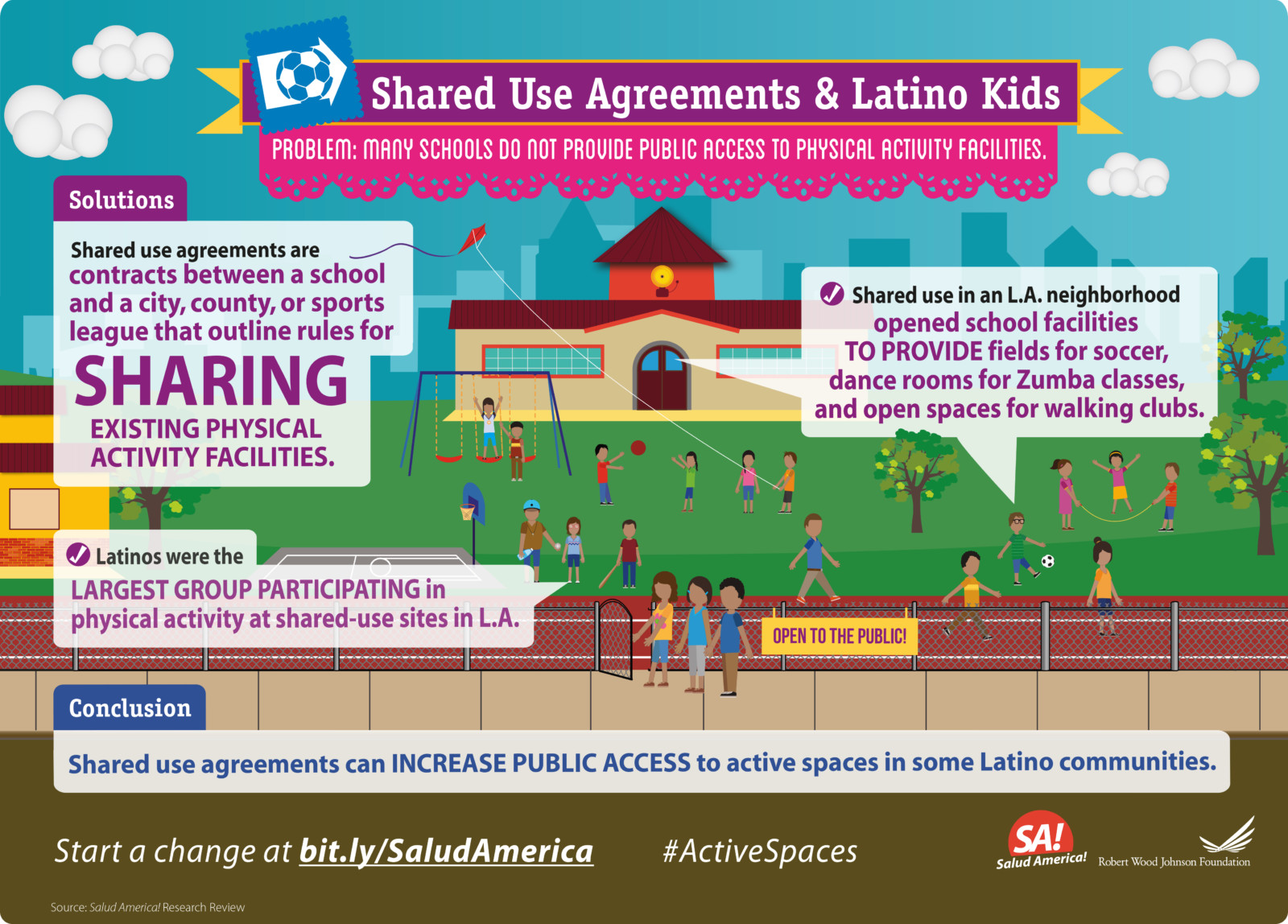
Access to active spaces. Few Latinos (70%) say their neighborhood has safe play spaces for kids.
Shared use agreements. Shared use in an L.A. neighborhood (94% Latino) opened school facilities to provide for soccer, Zumba classes, and open spaces for walking clubs. Public schools in all states have certain protections on liability or limits on damages, according to a study.
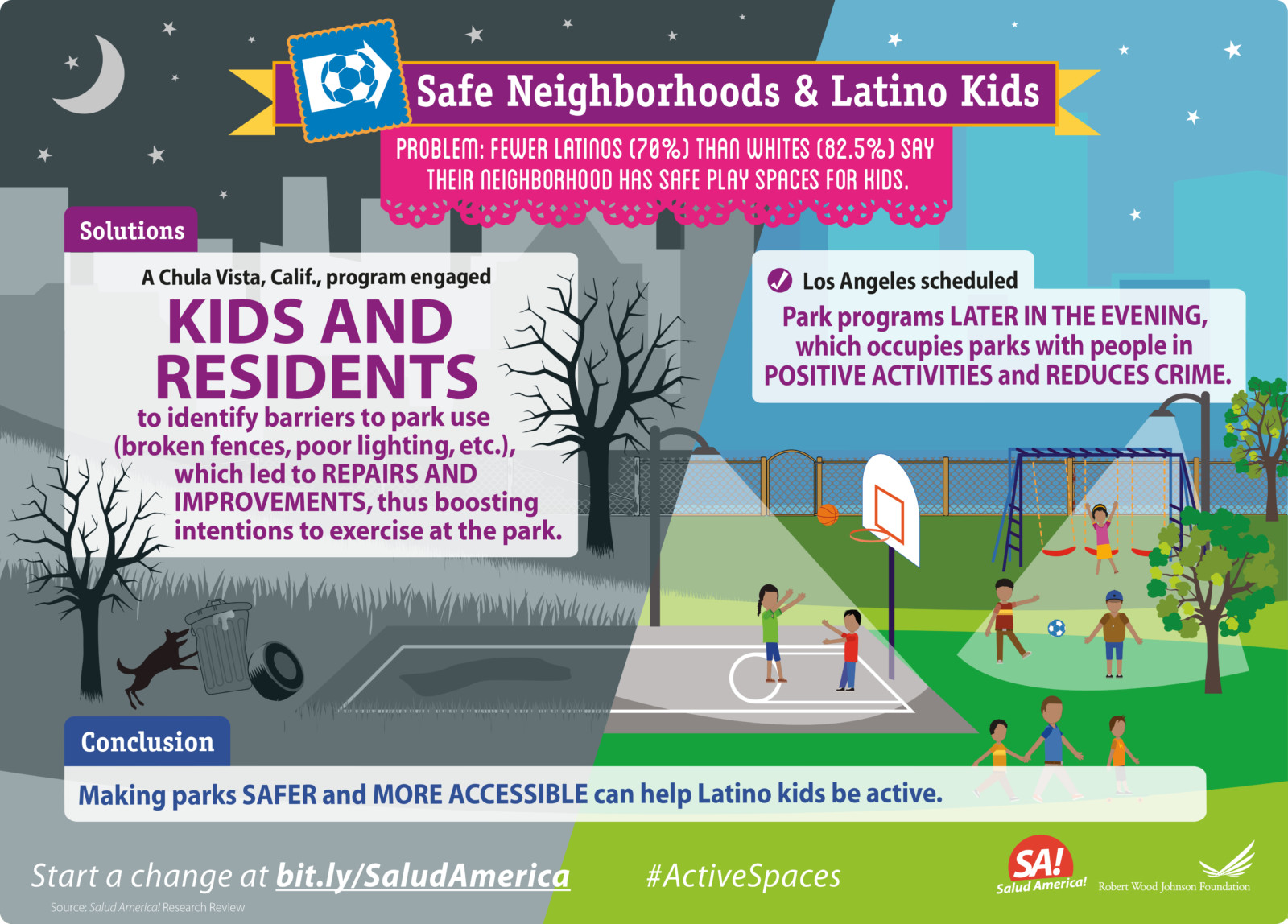
Unpleasant neighborhood characteristics. Fear of crime negatively impacts kids’ levels of physical activity. Also, unpleasant neighborhood conditions, such as trashed streets, gangs, odors, dilapidated playgrounds, unleashed dogs, and speeding cars, prohibited kids from being active.
Park maintenance and safe streets. A Chula Vista, Calif., (60% Latino), program engaged kids and residents to identify barriers to park use (broken fences, poor lighting, etc.). This led to repairs and improvements, boosting intentions to exercise at the park.
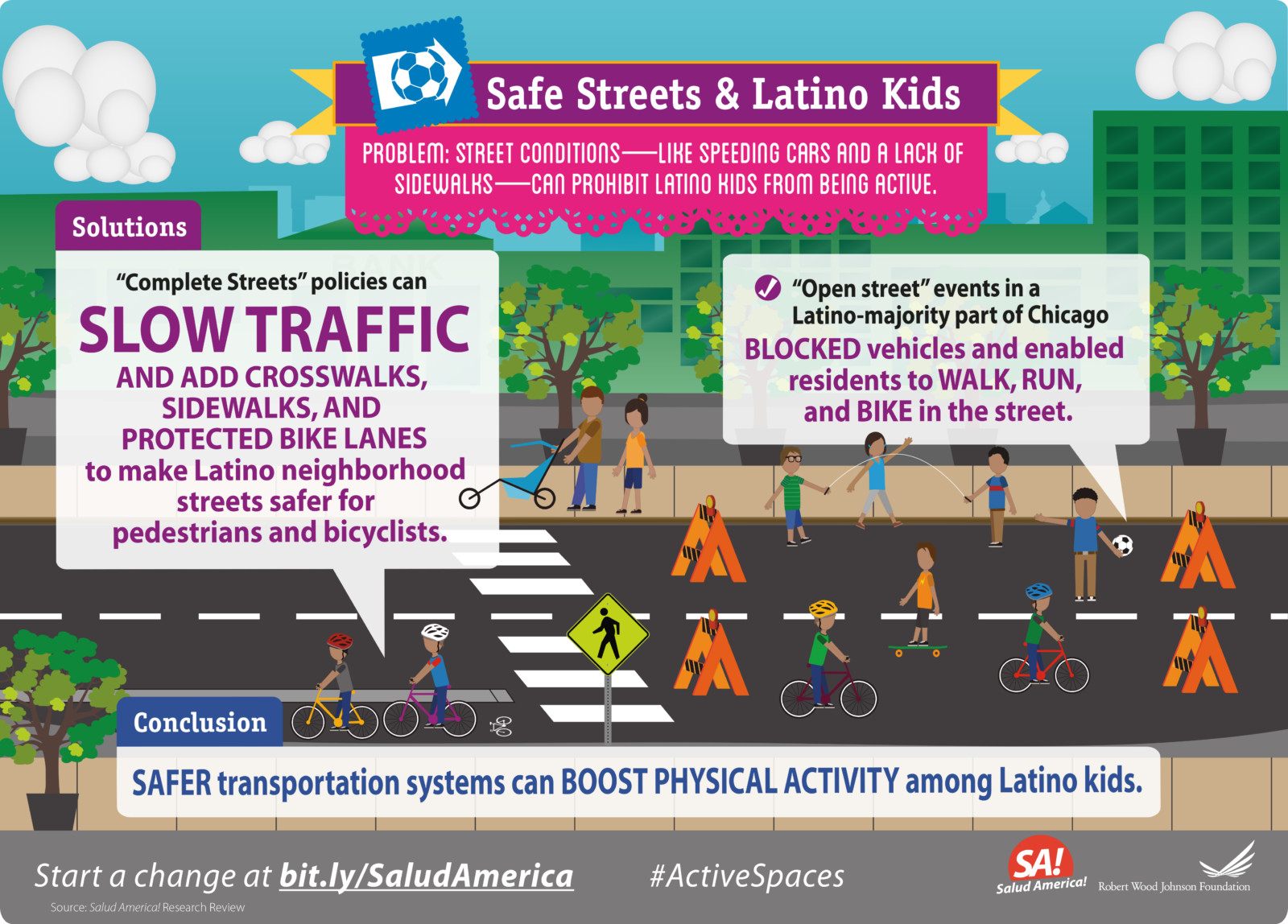
“Complete Streets” policies can slow traffic and add crosswalks, sidewalks, and protected bike lanes to make neighborhood streets safer for walkers and bicyclers.
Marketing of physical activity. The VERB social marketing campaign used bilingual, relevant radio and TV ads and other elements to improve physical activity levels in kids ages 9-13.
Conclusions
Policy Implications. Schools and local governments and community groups should work together toward shared use agreements with clear language to describe terms, conditions, and covered activities, and address liability and other concerns to increase public access to school facilities after hours. Policymakers should develop complete street policies, walk-and-bike-friendly transportation improvements, and park maintenance and improvements.
Future Research Needs. Further research is needed on the effectiveness of shared use and open use policies for increasing physical activity in communities. Research is also needed to evaluate how the built environment and improvements to neighborhood and park infrastructure affect physical activity among all youth, including Latino youth. More data on each of these issues could make a strong case for policy changes and funding for improvements.
Full Research Review & References
See the Full Research Review with references (PDF)
About the Authors
- Amelie G. Ramirez, Dr.P.H., Director, Salud America!, Professor, Institute for Health Promotion Research, UT Health San Antonio
- Kipling J. Gallion, M.A., Deputy Director, Salud America!, Assistant Professor, Institute for Health Promotion Research, UT Health San Antonio
- Jennifer Swanson, M.E., JS Medical Communications, LLC
This report is copyright 2017 RWJF, Route 1 and College Road, P.O. Box 2316, Princeton, NJ, 08543-2316, www.rwjf.org.
Explore More:
Green & Active SpacesBy The Numbers
33
percent
of Latinos live within walking distance (<1 mile) of a park

